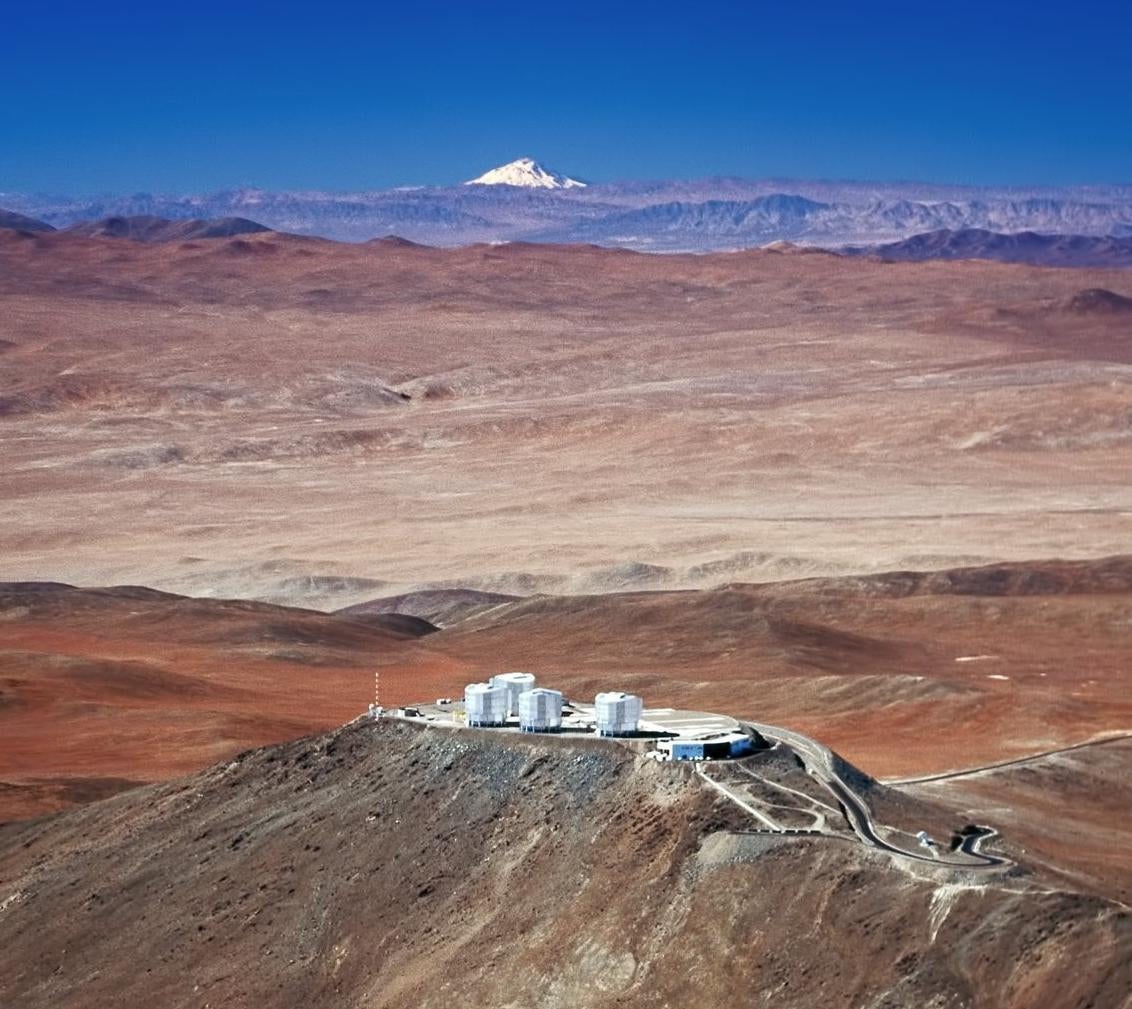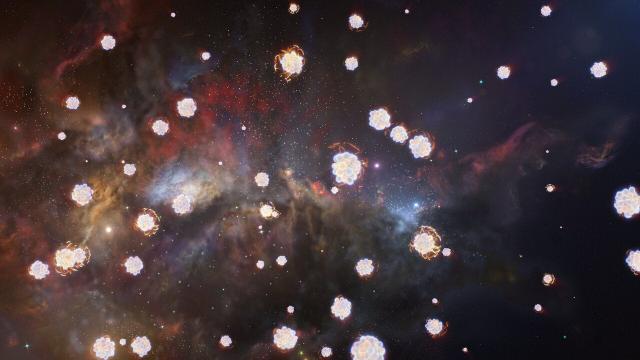Astronomers operating the European Southern Observatory’s Very Large Telescope think they’ve found three gas clouds that formed in the aftermath of the very first stars, when the Big Bang was still in the rear-view mirror.
In the eye of the Very Large Telescope, a ground-based, visible light observatory in Chile, the clouds appear as they did when the universe was around 2 billion years old. (The universe is now nearly 14 billion years old.) The team’s research on the clouds is published today in the Astrophysical Journal.
“Our discovery opens new avenues to indirectly study the nature of the first stars, fully complementing studies of stars in our galaxy,” said Stefania Salvadori, an astrophysicist at the University of Florence and a co-author of the paper, in an ESO release.
Heavy elements formed after the first light elements. That’s because heavier elements — think gold, thorium, or zinc — form from more energetic events, like supernovae or the mergers of very dense objects, like neutron stars. When the first stars, thought to be much larger than our Sun and constituted by hydrogen and helium, died, they gave rise to heavier elements like carbon and oxygen.

This process continued, as the next generation of stars formed from the gas spewed forth from the first supernovae. Those stars’ deaths gave way to more enriched gas and heavier elements, and so on. But iron — a heavier element than carbon and oxygen — was not formed by those early stars, whose deaths were too low energy to fling iron from their cores into the cosmos.
So to find the ancient aftermath of the earliest stellar deaths, the researchers looked for gas clouds poor in iron that had other heavy elements, namely carbon, oxygen, and magnesium.
They found these clouds using quasars, active galactic nuclei at the cores of galaxies. The extraordinarily bright quasars illuminated the gas clouds, whose chemical compositions were deciphered by the VLT’s X-shooter instrument.
Clouds like these three will be intriguing research subjects for the next generation of space telescopes, including the ESO’s appropriately named Extremely Large Telescope.
The Webb Space Telescope may also shed light on the aftermath of the first stars; earlier this year, the nascent space observatory showcased its ability to peer deep into molecular clouds, and can peer back at the oldest light we can detect.
